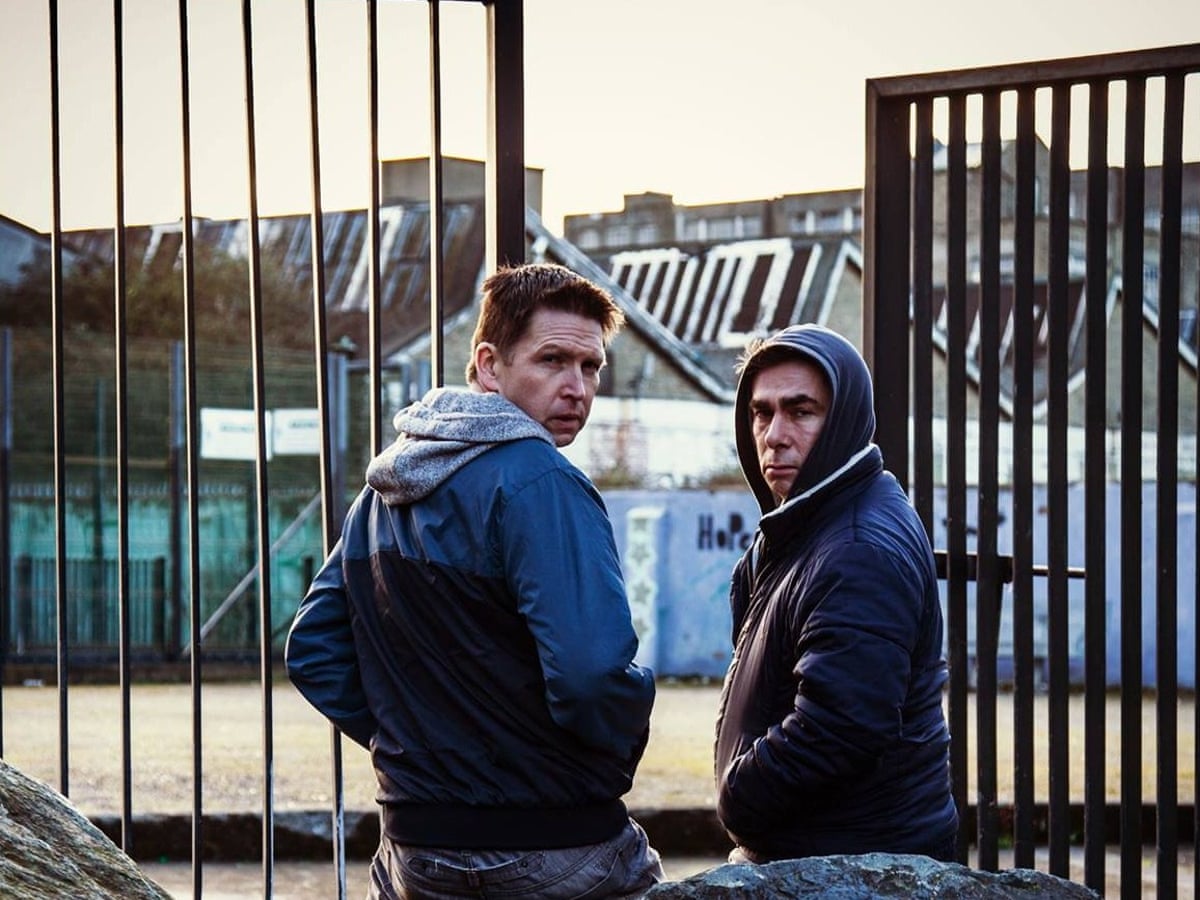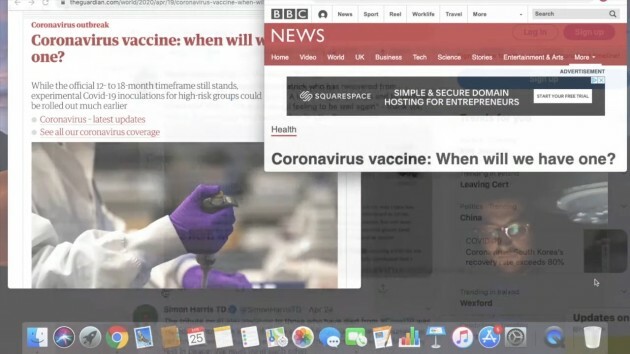The first in TFR’s coverage of VMDIFF, with reviews by Cathal Eustace and Katie McKenna.
Attending a film festival online was uncannily comfortable. Spanning nearly two weeks and beginning on the 3rd of March, myself and Katie McKenna were at liberty to enjoy and critique some of the most interesting films that VMDIFF had to offer. Whilst the idea of attending a festival in person, moseying around, seeing famous people etcetera is still at the top of my to-do list, my experience of VMDIFF online never struck me with a sense of loneliness. The VMDIFF website felt like browsing Netflix and the abundance of Q&As made up some semblance of the human to human contact you could expect from a film festival.
Be Good or Be Gone
Review by Cathal Eustace

Be Good or Be Gone was my first experience of the Virgin Media Dublin International Film Festival, detailing four days in the lives of two inmates on temporary leave from Mountjoy Prison. The film follows Ste (Les Martin) and Weed (Declan Mills) as they navigate their personal lives, aspirations and the criminal underbelly of Dublin city.
This script was brought to director Cathal Nally by Declan Mills who knew Nally would understand how to make this film. Writers Les Martin and Paul Murphy had a vision for Be Good Or Be Gone that would consistently be disregarded by previously approached production companies. “They were trying to turn it into a Guy Ritchie movie, which is not what it is, it’s a simple redemption story,” as Nally described to me in a private Q&A.
Throughout Be Good or Be Gone I was struck by subtle moments of reflection dispersed between the narratives’ chaotic mixture of comedy, gratuitous violence, and substance abuse. These small instances were carefully engineered by Nally with assistance from the rest of the cast and crew, which is a manifestation of Nally’s collaborative directing style and inclusive dialogue with cast members: “People are always saying “oh what about the director’s vision”. Fuck that. Who cares… I prefer to listen to everybody”. This organised communal reflection on Be Good Or Be Gone is responsible for some of my favourite moments in this film, particularly cinematographer Stephen C Walsh’s lingering, reflective close-ups, soaked in a pale light reminiscent of the prison cell to which our lead characters know they must return to.
The stories told whilst traipsing around Dublin city can vary greatly, but through a shared history and sense of place, they tend to complement each other nicely. From Ulysses to Adam & Paul (Lenny Abrahamson, 2004), the feel of Dublin permeates through the art that it is home to. In Be Good Or Be Gone, the flats of the north inner city often set the stage for Ste and Weed’s lonesome roamings. Here, they encounter the variety of eccentric characters whose roles tread the line between comedic relief and catalysts for violence. Be Good Or Be Gone intentionally struggles to decide whether it is a crime thriller or a buddy comedy. This lack of generic delineation conflicts with Nally’s reflective moments and ultimately serves to create a sympathy and respect for the characters.
Is There Anybody Out There?
Review by Katie McKenna

When we think back on the year 2020, the same thing comes to mind: the disease that shall not be named. A year of news stories about doctors, Leaving Cert students, and the elderly — we often forget about the less vocal groups. Vilified on the news as selfish party animals, the media forgets that college students are spending “the best years of their lives” when “they never looked better” indoors. In their film, Is There Anybody Out There?, Trinity’s students explore this.
Told through a series of video diary entries, Is There Anybody Out There? tells us the story of the pandemic as students show us their experiences of it. When I had the opportunity to talk to producer Justin MacGregor about his film, he described it as “a snapshot of another time”, and I couldn’t have described it better myself. It’s stunning how accurately the students captured the transition from the novelty of a two-week quarantine and fun staycations to the dread that comes with being in a tunnel with no light at the end. One of my favourite shorts starts with a group of students deciding to spend the rest of the semester in Kerry. What starts out as a fun holiday– students going for walks in the country and playing football on the beach– abruptly ends with the message “By April, the COVID 19 situation had worsened, and we left Cahersiveen and completed our last assignments at home”: a microcosm of 2020.
The film is hard to watch at times, each filmmaker tells their story with such honesty — a ‘warts and all’ approach — that it’s hard not to feel an existential dread while watching. A film that portrays such a traumatic period of time with such authenticity is never easy viewing.
But Is There Anybody Out There? isn’t about dread, or sadness, or tragedy. It’s about triumph. Showing us that, in times of great stress and sadness, we come together to help each other. Whether it’s the doctor in Peru putting his life on the line to save others or the college student checking on their friends, the film is full of people trying to help. Bursting through the sadness of the film there is hope. Is There Anybody Out There? shows us that we can — and will — get through this.
Interview With Justin MacGregor
You follow many stories throughout the film, do any of them particularly stand out to you?
Obviously, one of the filmmakers getting COVID and documenting it really stood out. It not only highlighted the way all the filmmakers were so honest about themselves and their situations but it was also a stark reminder of how fragile COVID had made everything and that people we know were, and are, in harm’s way. From the point of view of a documentarian, we live in an age where so much is labelled fake news and some people question what seem to be obvious truths, but the honesty of everyone involved gave an insight into the truth of the collective situation everyone was going through.
Having said that, when we were editing, what really stood out to me was how the stories came together to cover so much territory without it being planned centrally. After all, each of the filmmakers got to choose their own point of view and story. In the end, we had two stories about the situation in Italy, one from inside quarantine in Wuhan, a story of a doctor worrying about the poor in Peru, a firefighter in San Francisco, a Muslim talking about the meaning of Ramadan in the context of the lockdown, and so many more – as well as all the thematic links about family, friendship, mental health, technology, the news, being away from home…it was like tapping into the zeitgeist and then being able to edit it together into a story.
Were there any specific challenges you faced making a film in the midst of a pandemic?
There were several. The first was that it might not have worked at all as everyone was working in isolation! Fortunately, all the filmmakers rose to the occasion and delivered amazing points of views and perspectives on such diverse subject matter despite all the restrictions everyone was under. As they were all working in isolation, this led to very different styles, so then when all these films came in, it was like pieces of a complex puzzle you’ve never seen. The challenge was determining how to bring them together and ensure the fragments made up a whole and that everyone was represented. But the support of the Festival Director of VMDIFF, Gráinne Humphreys, kept us focused and offered everyone a light at the end of the tunnel. The final challenge was that we were going to move through different documentary modes and needed to make that coherent – all while working remotely. The editor, Andy Wilson, did a great job made even more remarkable given that we have never met in person. That was a first.
How did you decide when the story was complete? Was there a specific point during the pandemic that helped you decide that the story was complete?
I’m not sure the story is complete. This film feels like a snapshot of another time – the first wave of the pandemic starting to ease and the curve beginning to flatten. Watching it now, in this terrible third wave with vaccination so close and yet so far…there was so much we didn’t know, so many challenges ahead of us. The film ends on an upbeat note, people saying what they are looking forward to. But we’re not there yet, nearly a year later. The film may end, but the pandemic isn’t over.

